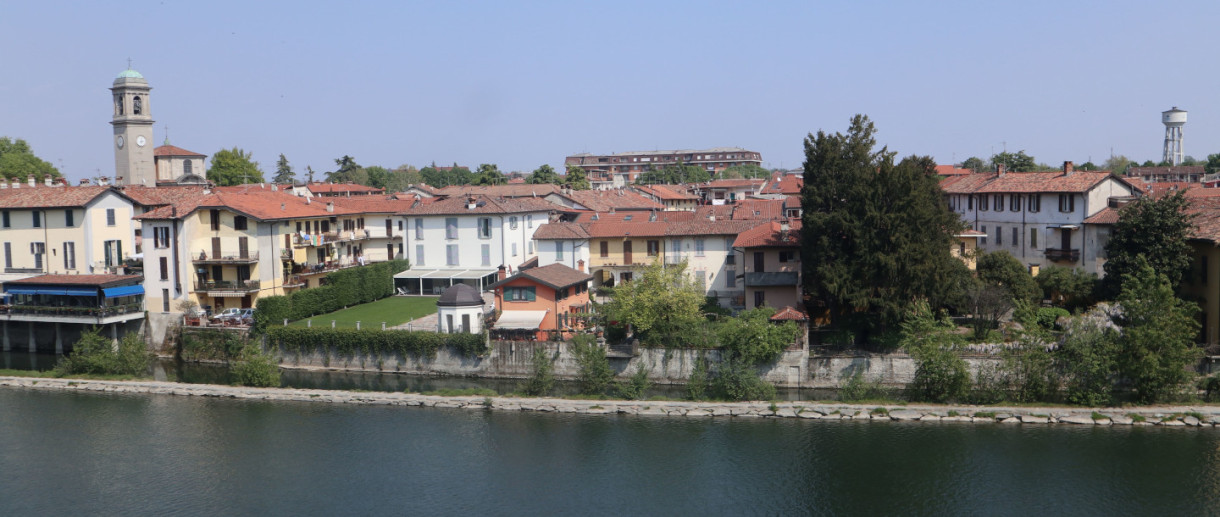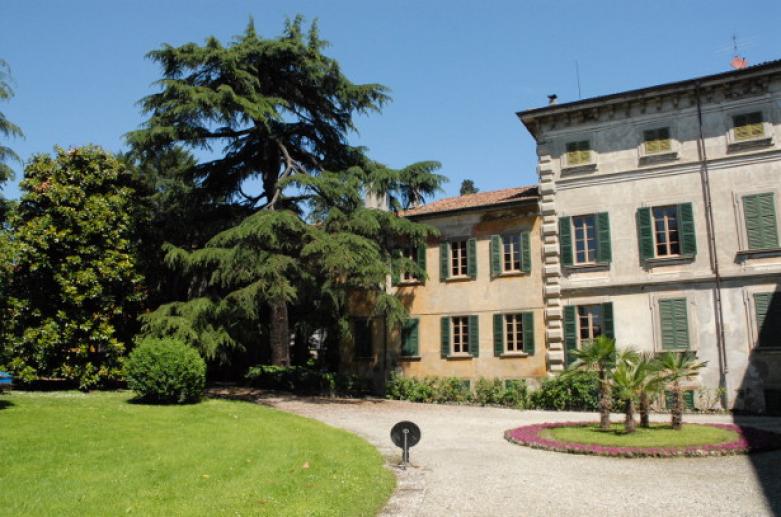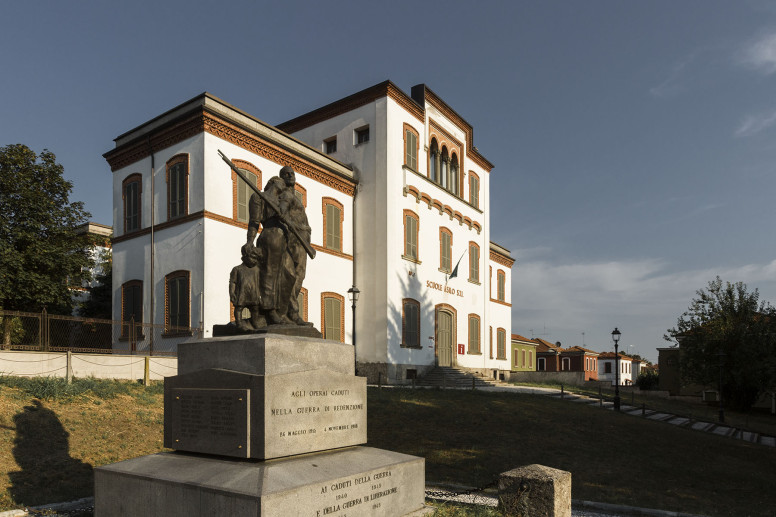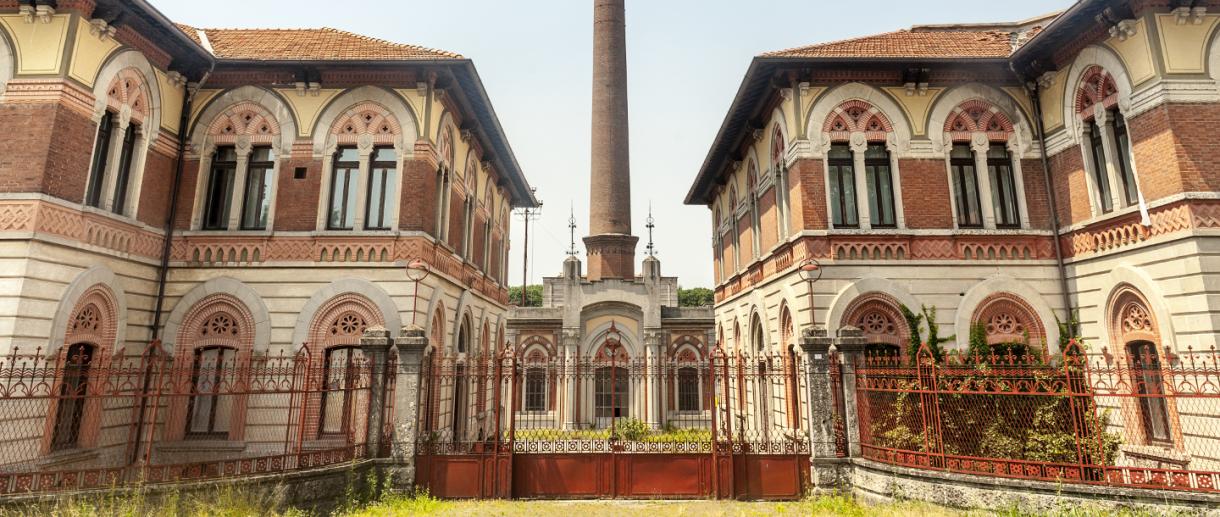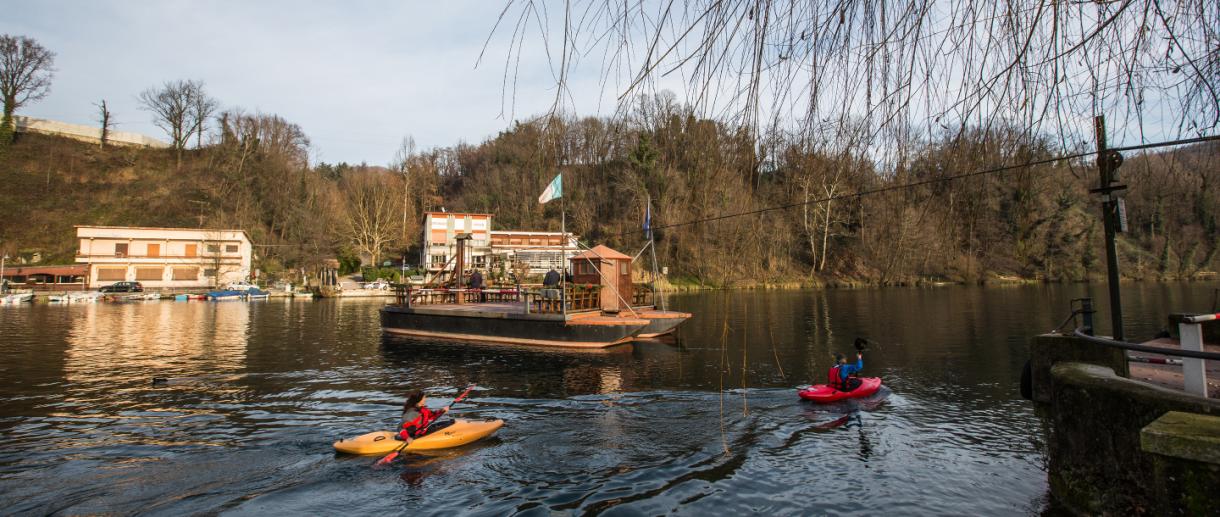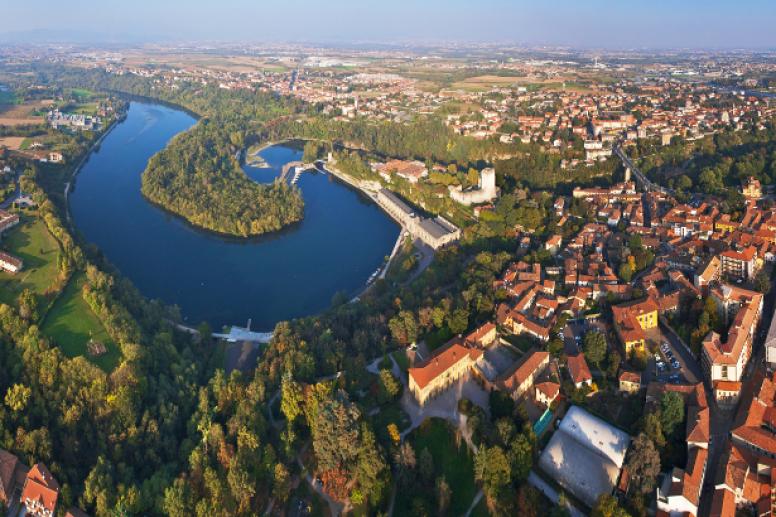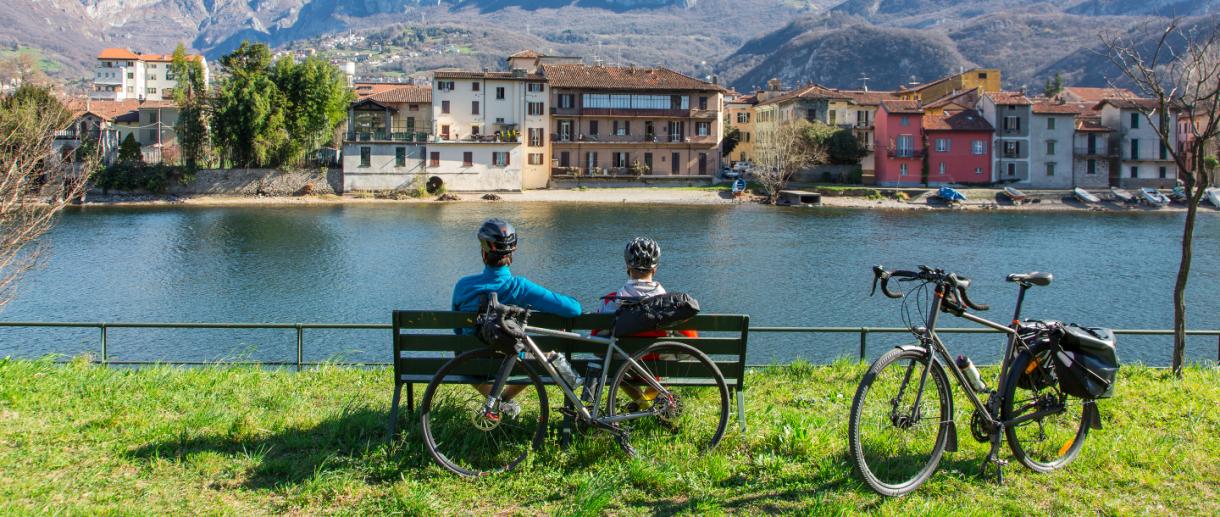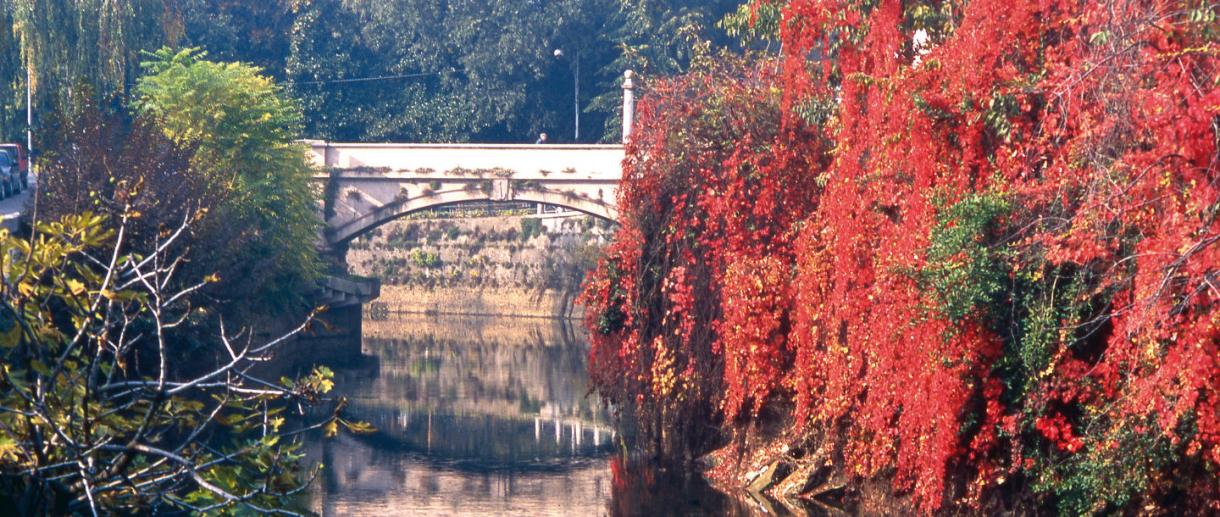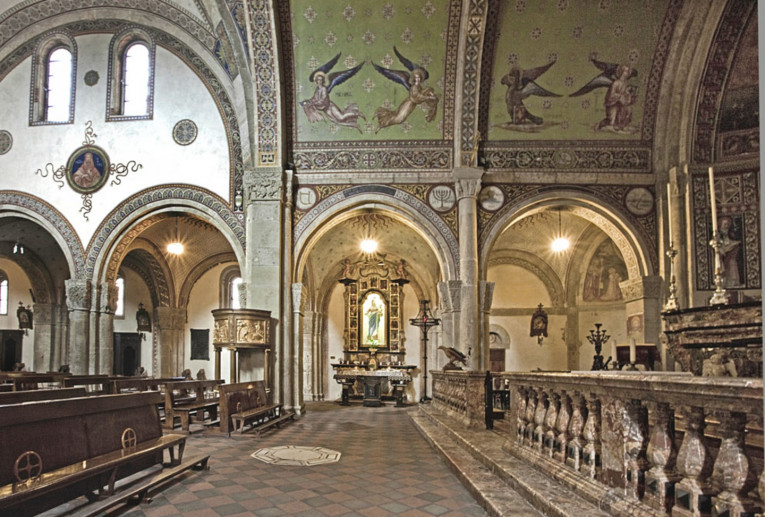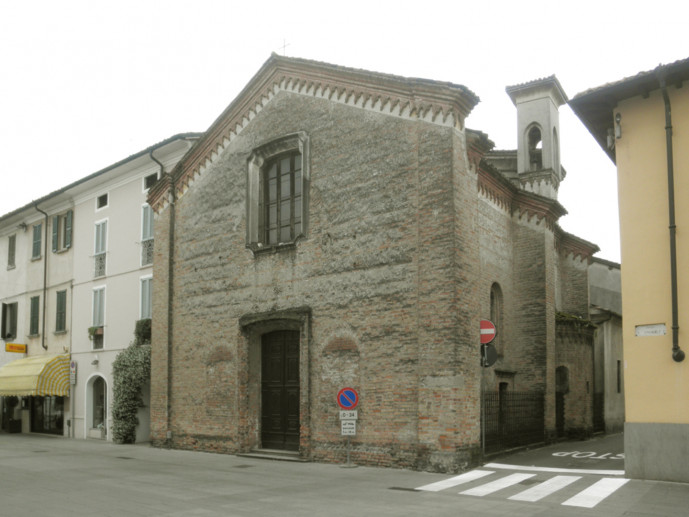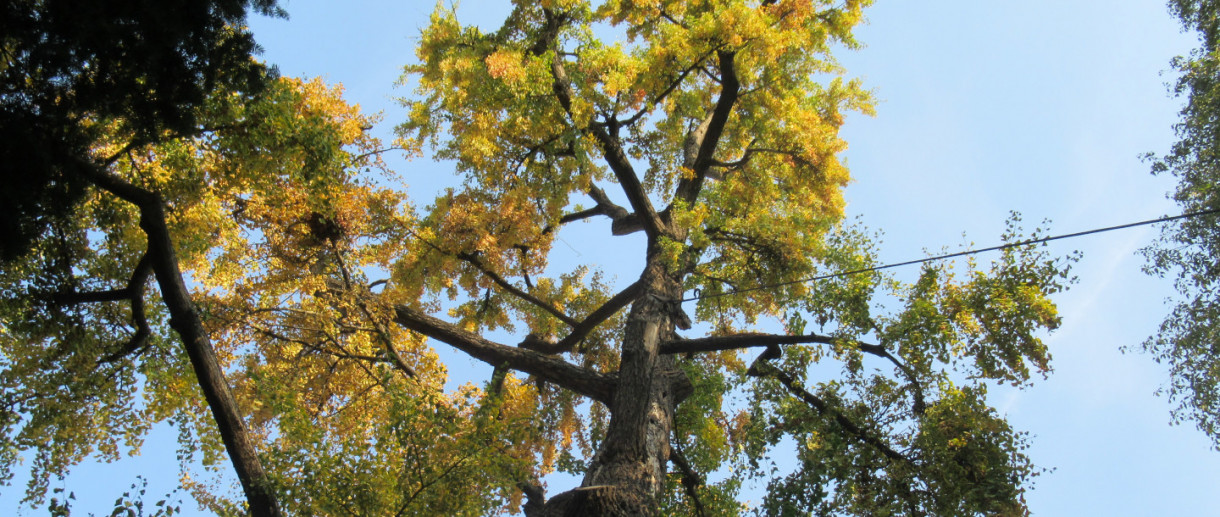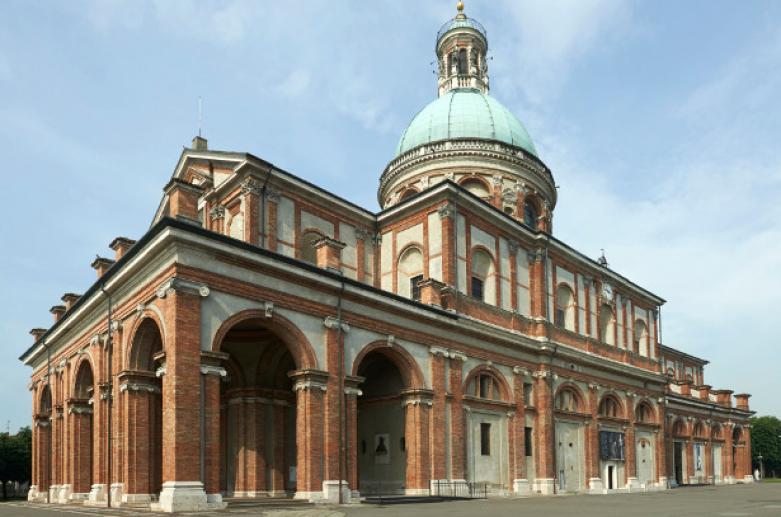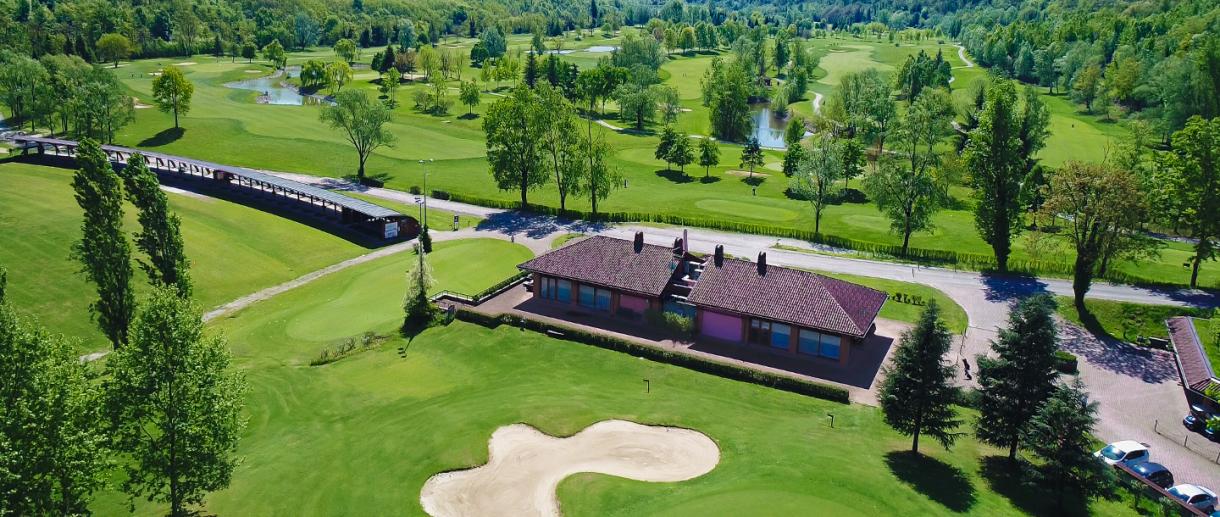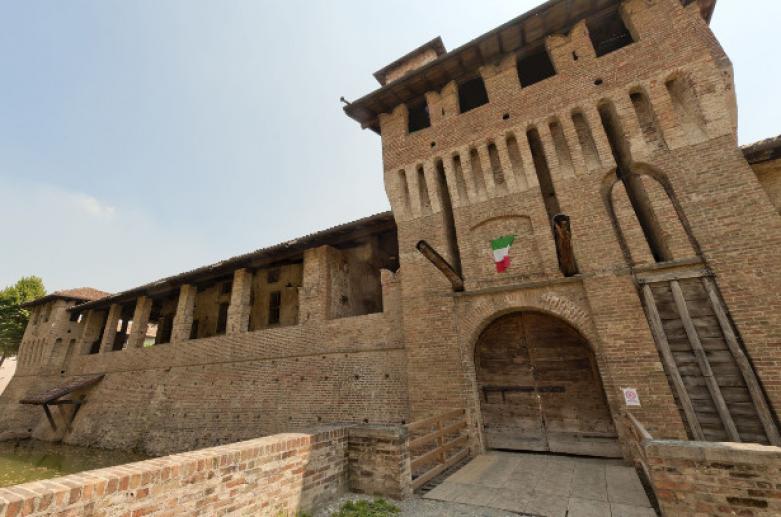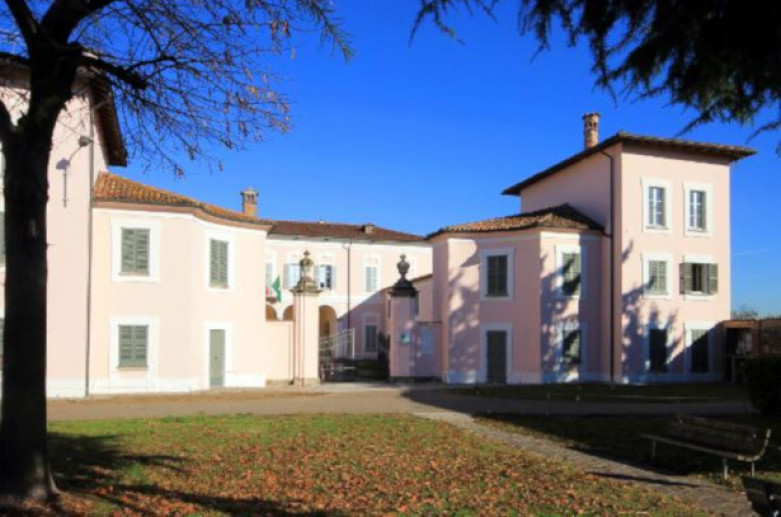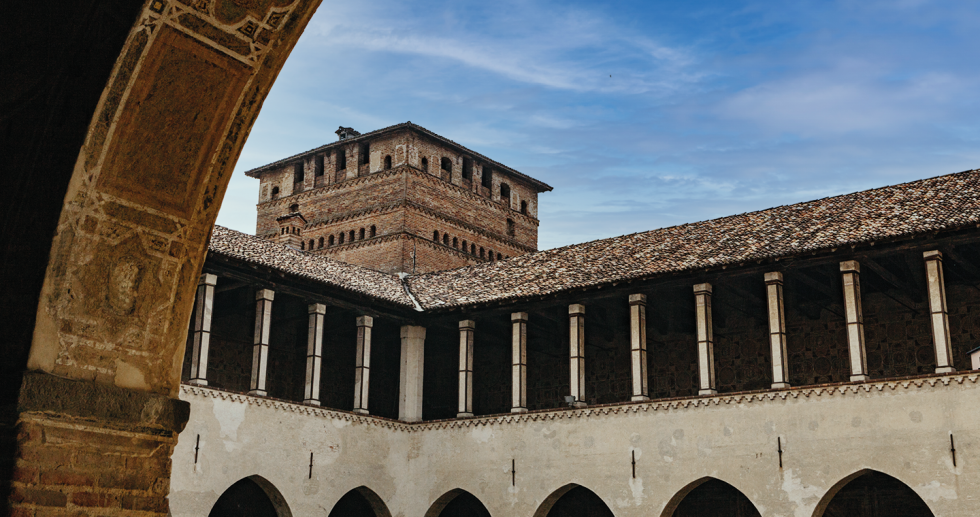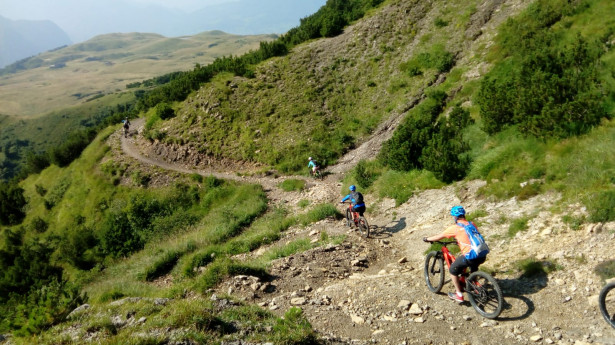- Navigli
- Leonardo
Leonardo's El Rudun in Groppello
Taking a ride back in time with the Groppello wheel in Cassano d'Adda, on the Martesana Canal
Walking or biking along the Martesana Canal, at the height of the center of Groppello d'Adda, one comes across a large wheel, which allows one to take a suggestive leap into the past.
It is an imposing water wheel, popularly called "el rudun. " Appearances immediately make one think of a large mill, just like the ones in the advertisements. In reality, technically it is a "noria": in fact, its function was never to grind grain or move machinery, but to lift water from the Naviglio in order to channel it into an irrigation system.
We are in Groppello, a hamlet in the municipality of Cassano d'Adda, and we have to go back in time when, in 1618, Cardinal Federico Borromeo had this large wheel built to convey the water needed to irrigate the vegetable gardens and the gardens of the Archbishop's Villa. It is said that this majestic work, at the Cardinal's request, was designed by Leonardo Da Vinci himself. Which, if possible, further increases its charm.
Collected by the Naviglio thanks to the rudun's paddles, the water was used not only forirrigation but also for the palace kitchens, to fill the laundry basins, as well as to feed two fords for watering livestock, one located in the small square adjacent to the Naviglio and the other in the town square.
The bridge adjoining the wheel has the peculiarity of being neo-Gothic with rusticated ashlars in the upstream side and round-arched on the downstream side, while near it are still visible the ancient wash houses, built by Archbishop Romilli in the spring of 1855, thus predating the rudun.
Dismantled in the late 1800s, the current rudun is no longer the original one, but was faithfully reconstructed in 1989. A partial restoration, carried out in the 1990s, restored the water-lifting system, allowing the wheel to continue operating, for mainly educational and reenactment purposes, into the third millennium. A new intervention was then necessary in 2009, when the wheel was removed and put back in its fully restored place for Christmas Eve of that year, when it returned to operation.
Some numbers: 11 meters in diameter, consisting of 8 mighty blades capable of moving and conveying water where needed. Today it represents an artifact of important historical and symbolic value, bringing visitors back to the fascinating memory of times gone by.

